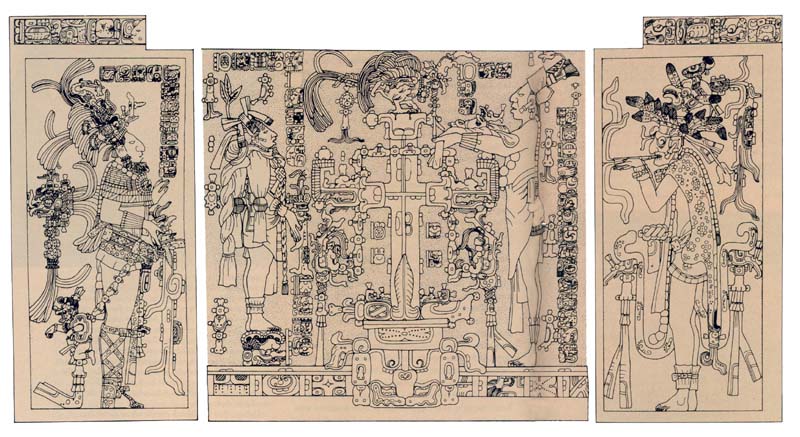Image Details

Linda Schele
Between Chan-Bahlum and Pacal stands an ornate cross shaped object surmounted by a large supernatural bird, a Mayan deity. Some have suggested that the cross symbolizes the crucihxion of Jesus. In fact, the cross is one of the world trees that, according to Mayan religious beliefs, stood at each of the four corners and in the center of the universe. The world tree seems to grow out of a monster, which represents the underworld.
The left-hand panel shows Chan-Bahlum in full regal dress after his accession to the throne. In the middle panel, he has not yet become king, and he stands barefoot and more simply clad.
In the right-hand panel, the chief underworld god of the Maya, God L, smokes his customary cigar (see photograph of original stone panel). He is probably portrayed in the accession scene because the Maya believed that when the sun set, it “died” and entered the underworld. The king, Chan-Bahlum, apparently helped the sun to be “reborn” each morning as it emerged from the underworld. The Maya feared that one day the sun might not have the strength to rise, and people had to help provide that strength by performing appropriate rituals. According to the author, the cigar-smoking God L seems very different from the Hebrew God Yahweh, and the rituals and beliefs represented on this panel are quite unlike Old Testament beliefs.
